Ever since the time I caught head lice when the kids were little, I’ve been slightly insane about parasites. Hospitality is a delicate custom and in my ideal universe, giver and receiver should get a fair shake. So when the vegetation is laid bare in winter and I spy prettiness that isn’t what it seems to be, I get a little crazy.

Take ivy. Okay, I admit I’m biased and I know ivy is not a perfect example, but since I’m on a rampage, I’ll begin here. This centuries’ old acacia boule has been the setting for an ongoing battle for years. To save the tree we severed the ivy roots at the base until our wrists were falling off, but still the ivy vanquished. It took a gymnast on a double ladder to discover that the ivy had planted itself firmly, high in the humus collecting in the center of the tree. All we can do now is keep it in check.
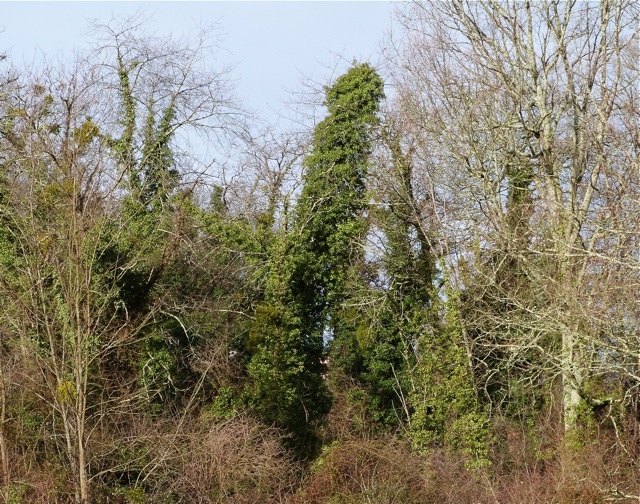
Because of this mental illness about parasites, a winter walk in the woods is no longer pure pleasure. Instead of bird watching, I’m spotting trees being slowly suffocated by ivy, or worse – the dreaded mistletoe. In winter you can see the natural nakedness of the healthy trees against the flashy, bright green wrappings of the parasites.
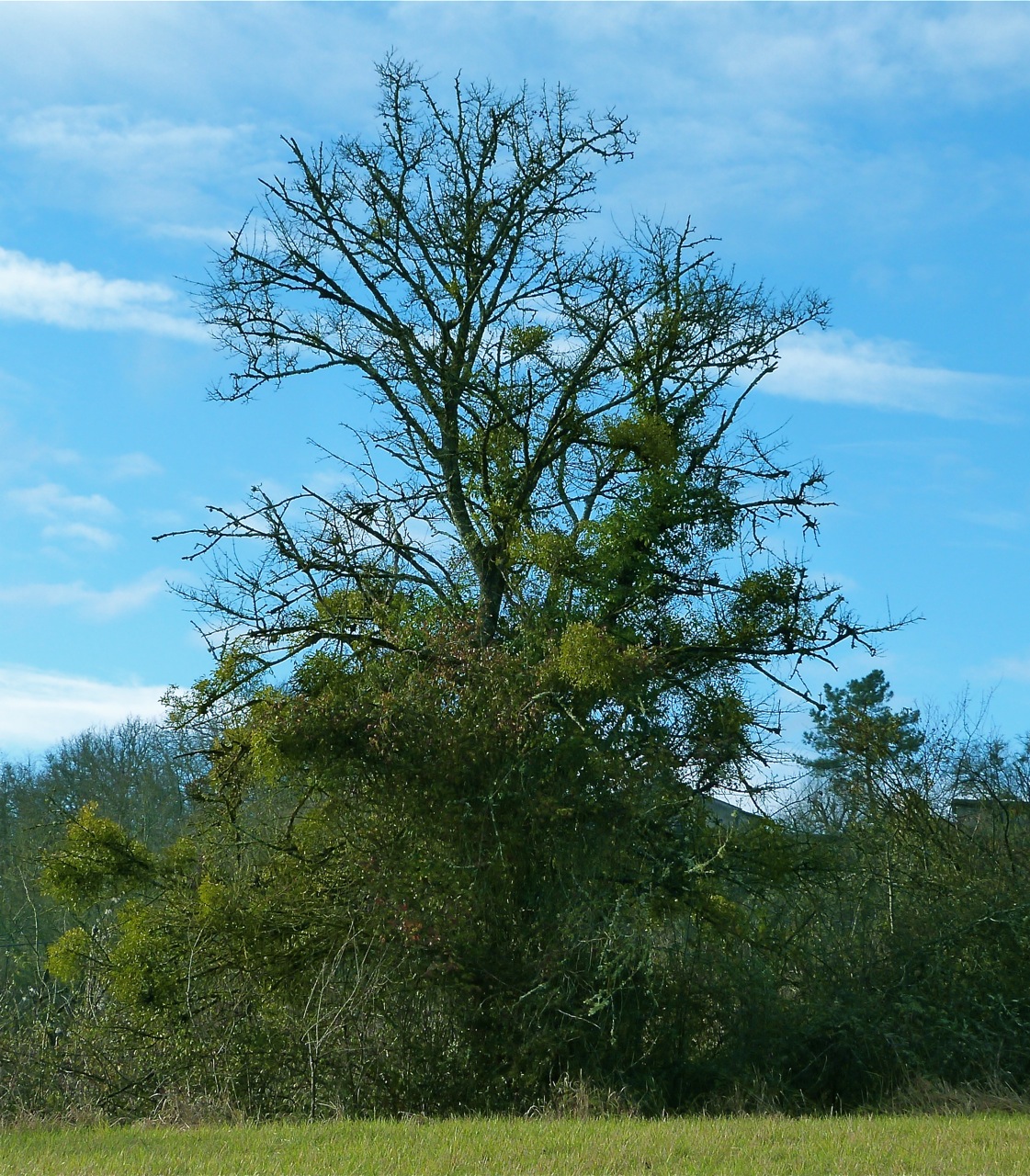
Here the mistletoe is so advanced, the tree has rotted and will soon die. The parasite embeds inside the tree and nourishes itself by sucking the host’s life. Mistletoe is spread when birds eat the berries and then carry the mistletoe seeds to the next tree. Of course the birds do benefit, but that’s all the good I have to say about mistletoe. I won’t even hang a kissing sprig at Christmas anymore.
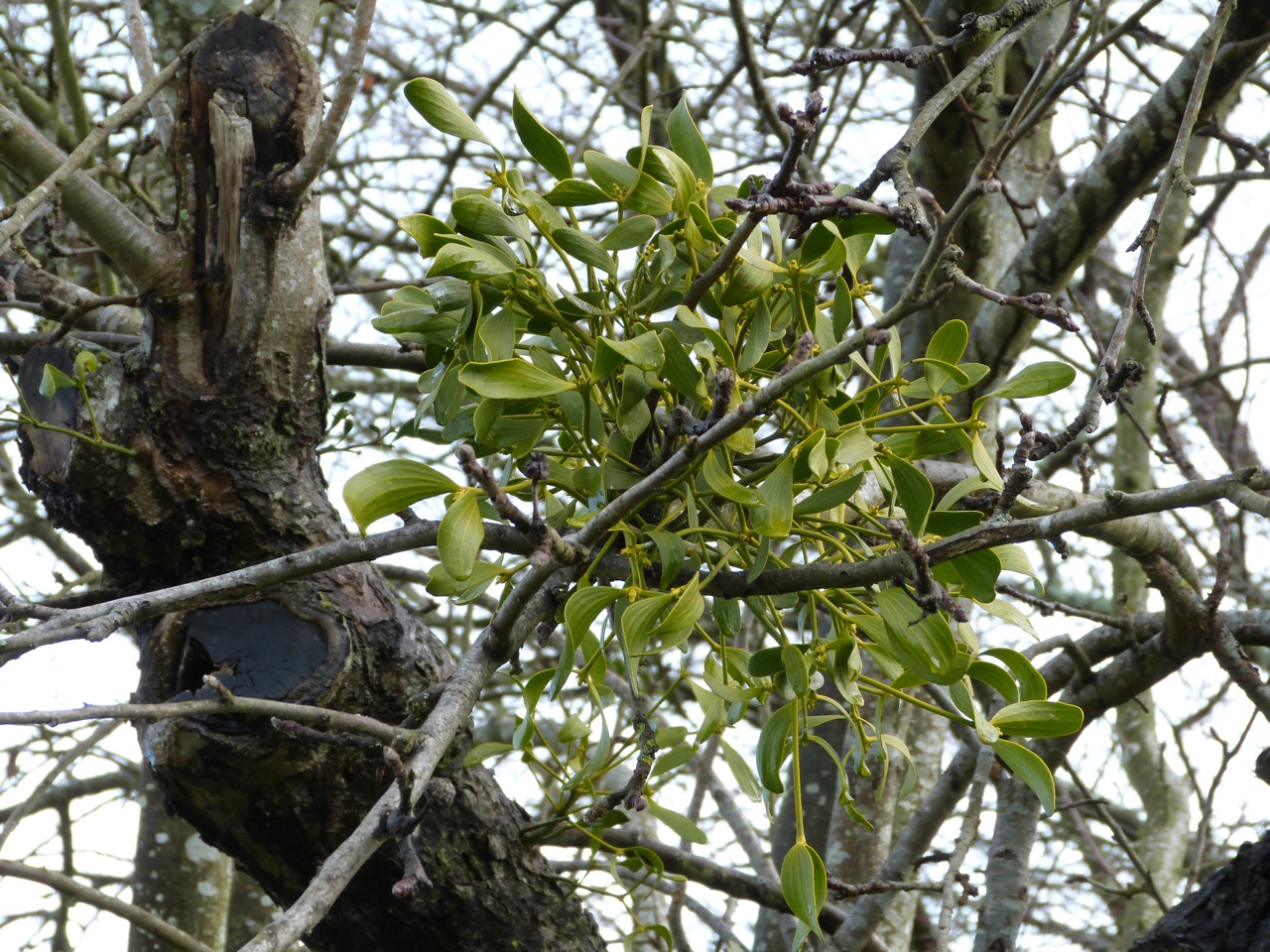
Ivy is a different beast. Although it can eventually suck nutrients from the tree, ivy actually uses the host as a vehicle for climbing toward sunlight. Left unchecked it can completely cover the tree. Obviously, a tree can’t survive without sun. And in a high wind a tree weakened under the weight of ivy is more likely to topple.
My modest solution is what I carry in my purse: besides wallet, notebook and hand sanitizer, alway a pair of shears. For my birthday I’ve asked for a pocket sized chainsaw because some of the ivy shoots can grow thick as tree trunks.

But I admit, there are some positive things to say about ivy. During winter when food for birds and insects is in short supply, ivy offers berries and nectar. Plus, as the only green in our hedges, it provides winter camouflage for creatures hiding there and encourages biodiversity.
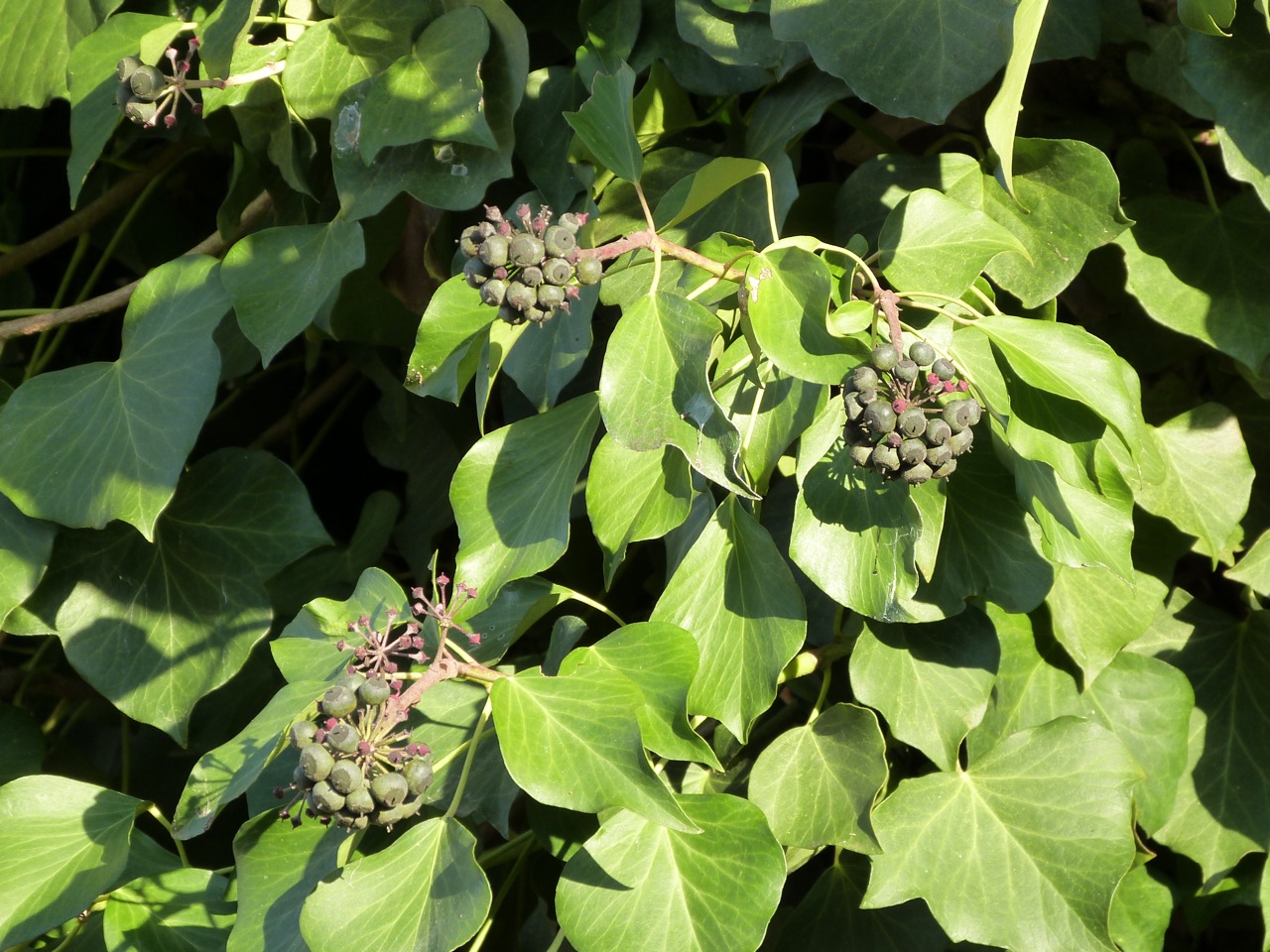
So my goal is balance. I shoo it off towards an ugly telephone pole where it creates a pretty dress for our eyes and meals for the tiny locals.
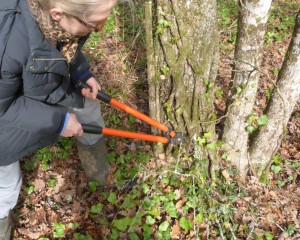
And although ivy is anathema to stone walls and masonry since it can creep into crevices and crack everything, with just a little attention it can be downright picturesque.
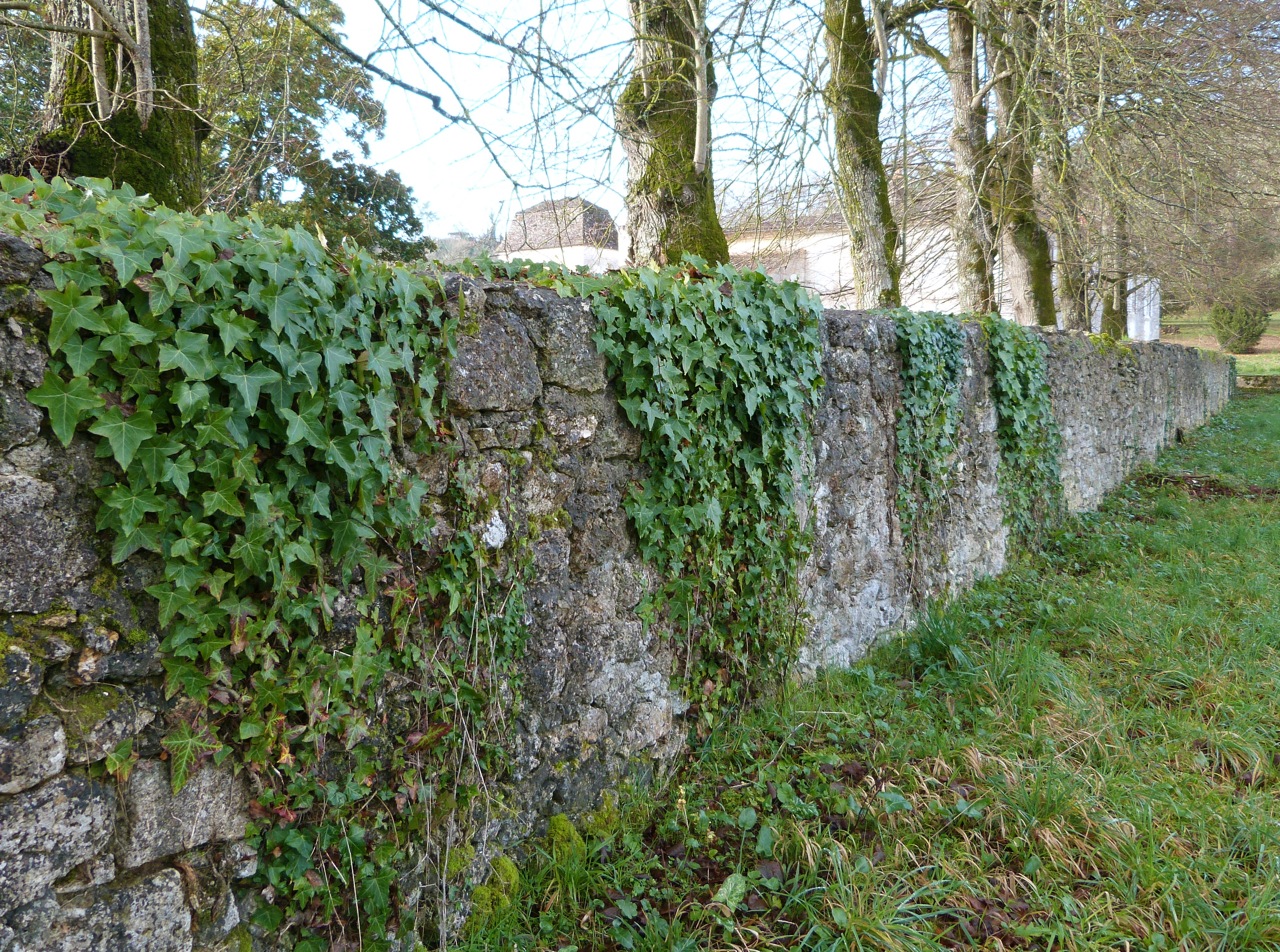

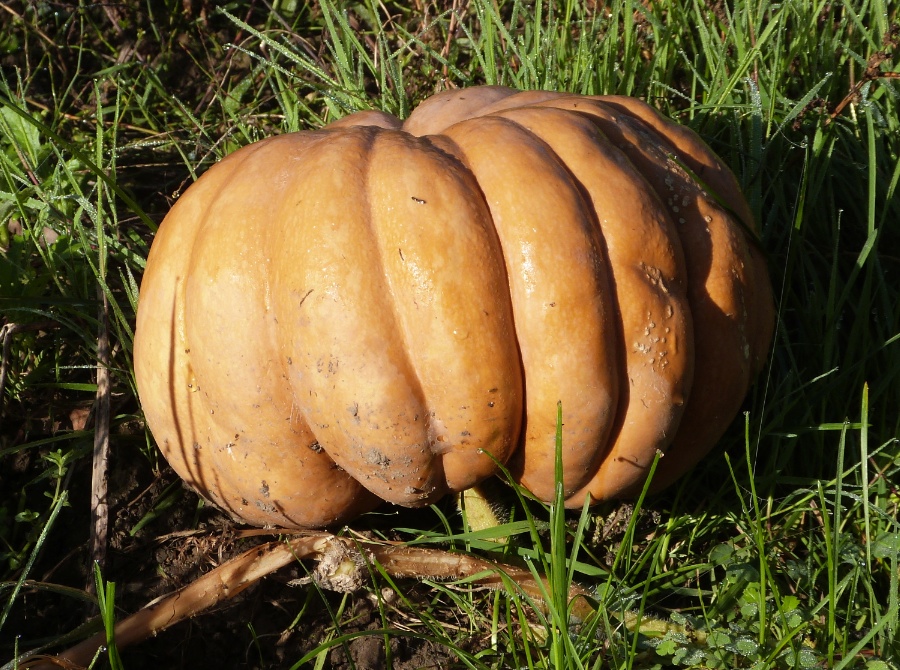
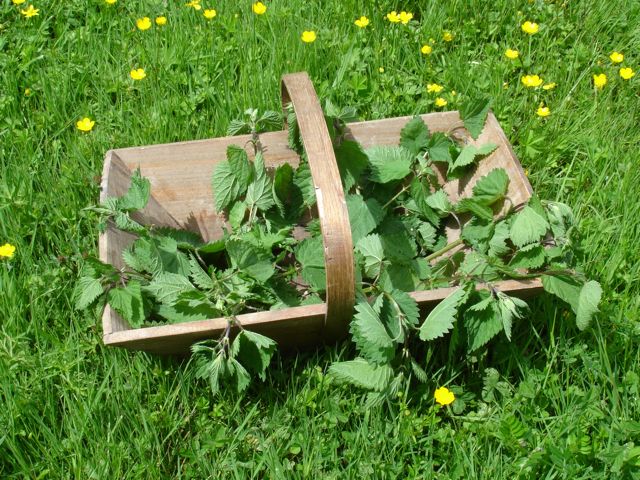

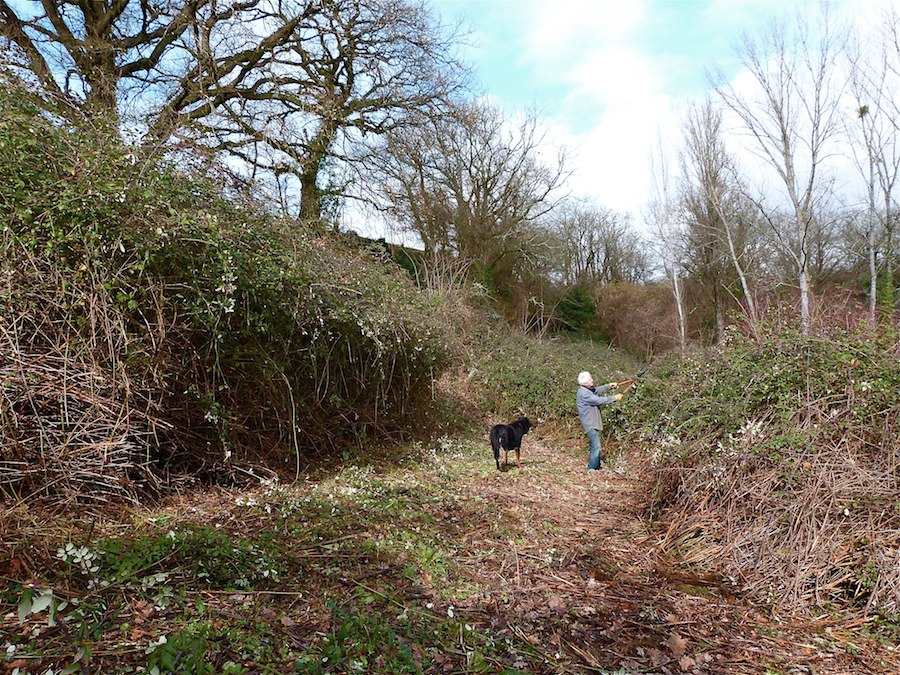
One thought on “Not All Green Is Good”
Loved the lesson and I learned, and enjoyed the correctly vine covered stone wall. It is good to know it can be handled properly, so there Sammy! Flo